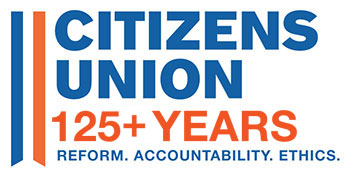Why Does Redistricting Matter?
Legislative gerrymandering is the single biggest factor contributing to the dysfunction and chaos of New York State government. By changing the way voting districts are drawn, we can attack the root of a long standing power structure designed to keep legislators in office rather than to serve the people of New York State.
Definition. Gerrymandering occurs when electoral district boundaries are deliberately modified for the purposes of aiding a particular candidate or party, often producing contorted or unusual shapes and splitting apart communities. Gerrymandering is used to generate desired election outcomes for a particular party, or to help or hinder a particular group of constituents: political, racial, linguistic, religious group or socioeconomic class.
Top of the heap. While many states dabble in it, New York State has taken gerrymandering to an extreme, having the process controlled by those in control of each house of the legislature for the last 40 years. The result? In New York, state elected officials have chosen their voters long before the polls open on Election Day. The legislators have drawn, then vote upon, their own district lines in order to secure allegiance to party leadership, protect lawmakers already in office and discourage challengers, even within the same party
Gerrymandering
• Undermines the power of communities to be represented by letting legislators create tailor-made districts that reward and punish “worthy” or “misbehaving” legislators.
• Splits apart communities and dilutes their voting power.
• Encourages legislators to cater to the extremes of their constituent base since, in gerrymandered districts, only those on the edges have the power to tip the scales and cost legislators elections.
• Discourages genuine debate about serious issues facing our communities.
• Strengthens an Albany decision-making structure based on several people behind closed doors rather than representative democracy designed to serve broad public interest.
Citizens Union’s Achievement of Long-Term Redistricting Reform
The state legislature in 2012 and 2013 passed a constitutional amendment (constitutional amendments are required to pass twice) to reform the state’s redistricting process. Citizens Union in 2013 and 2014 will educate voters about the issue to ensure its passage in 2014. The amendment will then create an independent redistricting commission in advance of the 2022 redistricting process, ensuring that never again will legislative lines be drawn by the legislature.
For more information about the constitutional amendment, see the Frequently Asked Questions developed by Citizens Union and the League of Women Voters/NYS, as well as an important communication from Citizens Union to its members.
See also Citizens Union’s efforts through the ReShapeNY coalition, which was active in 2011 and 2012 during the creation of the 2012 district lines.
 Case study. In 2000, Hakeem Jeffries ran against longtime incumbent Assemblymember Roger Green in Brooklyn. He didn’t win but came close. Too close. Taking no chances, the state legislature redrew the lines in 2002 to specifically exclude the block where Mr. Jeffries lived, as well as his base of efforts. (Mr. Green was subsequently indicted in a corruption scheme, and in 2004, after moving into the redrawn district, Mr. Jeffries ran for the seat and won. Read about Citizens Union’s state ethics work.)
Case study. In 2000, Hakeem Jeffries ran against longtime incumbent Assemblymember Roger Green in Brooklyn. He didn’t win but came close. Too close. Taking no chances, the state legislature redrew the lines in 2002 to specifically exclude the block where Mr. Jeffries lived, as well as his base of efforts. (Mr. Green was subsequently indicted in a corruption scheme, and in 2004, after moving into the redrawn district, Mr. Jeffries ran for the seat and won. Read about Citizens Union’s state ethics work.)
